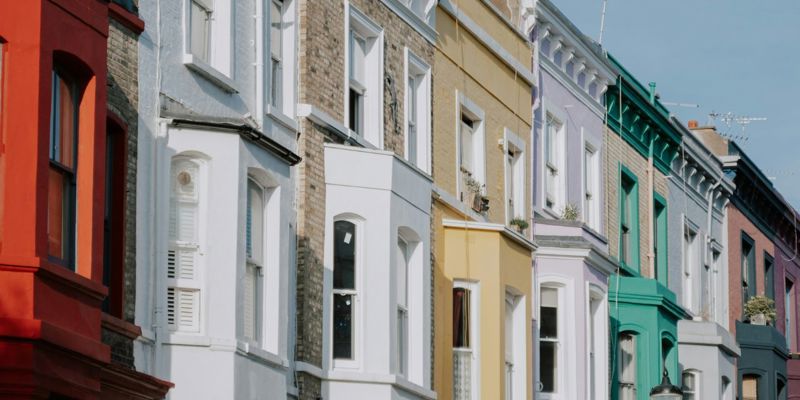
Disability discrimination in housing: how far does the Equality Act 2010 take us?
Jodie Green looks at the protections the Equality Act 2010 affords disabled people seeking accessible accommodation and considers its limitations, concluding there is a long way to go to ensure disabled people are not unfairly disadvantaged in this area.
Disabled people face long housing searches, huge extra costs and often live in unsuitable homes which harm their health and do not enable them to live independently. Almost half of all people in poverty in the UK are living in families with a disabled person. Two thirds of disabled people living alone are in poverty. Disabled people are far more likely to live in social housing than non-disabled people (24.9% of disabled people as opposed to 7.8% of non-disabled people).
Sadiq Khan’s London Plan requires 90% of new-build homes to be accessible and adaptable (meeting what is known as the M4 (2) standard in Approved Document M of the Building Regulations 2010, to include step free access and internal and external doors wide enough to permit a wheelchair) and the other 10% to be suitable for wheelchair-users (known as the M4 (3) higher standard, to include adapted sanitary fittings and kitchen appliances). However, disability rights advocates continue to express concerns that compliance with M4 (2) and M4 (3) standards has significantly declined over the years. Of new homes completed in London in 2022-23, less than 5% were suitable for wheelchair-users, and only 41% were built to M4(2). With that being said, Khan’s London Plan is still ahead of the rest of the country, with many cities still having no plans for providing wheelchair accessible homes beyond the national guidelines, which only say that homes should allow wheelchair users through doors and hallways on the entrance level.
The Equality Act 2010 – what does it say?
The Equality Act 2010 (‘the Act’) provides disabled people with protection in law from discrimination in relation to their housing. Examples of how the Act can apply include in relation to how a private landlord treats their disabled tenants, or how a Local Authority treats homeless applicants and allocates their housing stock. The Act places duties upon providers of housing to, for example, make reasonable adjustments for disabled people (Sections 20 and 21 of the Act), to not discriminate against disabled people in the management of their housing (Section 35 of the Act), and to not directly (Section 13 of the Act) or indirectly (Section 19 of the Act) discriminate against disabled people.
Damages can be awarded by the Court for breaches of the Act (Section 119 of the Act), to include compensation for financial loss, injury to feelings and any personal injury a disabled person has suffered as a result of discrimination. Damages for injury to feelings and psychiatric injury in discrimination cases are assessed in accordance with the ‘Vento bands’ (see Vento v Chief Constable of West Yorkshire Police (2002)), and damages awarded can range from approximately £1,000 for a minor ‘one-off’ breach of the Act, up to £55,000 (or more) for the most serious and sustained discrimination.
Breaches of The Act and the importance of emphasis
In Plummer v Royal Herbert Freehold Ltd (2018, Central London County Court), it was held that a management company that runs a leisure club on a luxury housing estate discriminated against a disabled Leaseholder by repeatedly refusing to make the adjustments that would allow him to use the swimming pool. It was found that the company had indirectly discriminated against the Claimant and failed to make reasonable adjustments, in breach of the Act. The Claimant was awarded £9,000 in damages.
In Smailes and Payner-Smailes v Clewer Court Residents Ltd (2019, Cardiff County Court), it was held that the disabled Leaseholder of a flat had been discriminated against by their Freeholder, as the Freeholder had withheld consent for alterations the Leaseholder needed to make to their flat to make it wheelchair accessible. The Freeholder in withholding consent had failed to make reasonable adjustments, in breach of the Act.
Whilst these cases show what can be possible using the Act, each case will turn on its particular facts, and it is important to frame any claim correctly, as the Act is more or less demanding depending on what Part of the Act the claim relies upon. This requires careful thought, because if the claim is not brought under the correct Part of the Act, it may fail.
In Nur v Birmingham County Council ([2021] EWHC 1138), it was held that the Local Authority’s housing allocation scheme discriminated against disabled people, as the allocation scheme gave preference for houses to be allocated to families with children under the age of 18, but there was no adapted accommodation in the Local Authority’s housing stock that was not a house. The Local Authority was held to be indirectly discriminating against disabled people, in breach of the Act.
In R (Imam) v London Borough of Croydon [2023] UKSC 45, Ms Imam was a disabled person living in unsuitable Local Authority accommodation with her three children. The Local Authority had accepted that the accommodation was unsuitable for her needs as a disabled person, but said that they had no suitable houses and insufficient funding to comply with their duty to provide her with suitable housing, further to Section 193(2) of the Housing Act 1996. The Supreme Court held that the Local Authority were required to comply with their duty towards Ms Imam to locate accommodation that was suitable for her needs as a disabled person, and that the Local Authority’s lack of resources did not mean they could escape complying with their duty. However, the Supreme Court stopped short of making a Mandatory Order against the Local Authority to locate suitable accommodation.
Looking forward: changes to be made
Disabled people can apply for Disabled Facilities Grants to assist with the cost of paying for adaptations to their homes, however this process can be lengthy and costly, as it often involves the instruction of an expert Surveyor to determine the adaptations required.
Whilst the Act therefore provides important protection from discrimination and legal rights for disabled people, there are also limitations on the application of the Act to housing, for example the Act does not require a Freeholder to make physical adaptations to a building for disabled residents. The Social Model of Disability was developed by disabled people and describes “people as being disabled by barriers in society, not by our impairment or difference. If modern life was set up in a way that was accessible for disabled people, then we would not be excluded or restricted.”
It is clear that great strides forward still need to be made to fund the building and adapting of homes, and to remove the barriers in society which unfairly disadvantage disabled people.
Jodie Green is an associate in the property litigation team. She represents clients in connection with a broad range of housing and property disputes, as well as undertakes legal aid work including judicial review and homelessness appeals.
Get in touch
If you would like to speak with a member of the team you can contact our property litigation solicitors by telephone on +44 (0)20 3826 7525 or complete our enquiry form.




